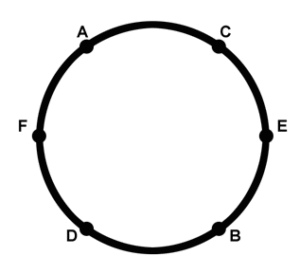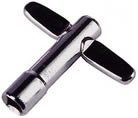How to Tune your Drums
How to make your Drum Kit sound Amazing with Drum Tuning
Drum Tuning – Eventually, everyone will need to change their drum heads, and tuning your drums is vital in getting the best sound and life out of your drum heads. I will explain how to remove your old drum head and install your new drum head and the best way to tune your snare, toms, and bass drums to find the right sound for you and the type of music you like to play.
Your drum set/kit should be tuned regularly. Without tuning your drums regularly, your drum kit will sound flat and out of pitch, your drum heads will be susceptible to damage and you will have to buy new drum heads a lot faster than necessary. There is no one way to tune your drums, like selecting your drum heads, tuning your drums are extremely personal and you should experiment to get the pitch right for you.
Removing the old Drum Head
Undo all the screws using your drum key this may be done in the same sequence as installing your drum head (ref to the diagram below). Be sure to have a cloth handy when you remove your old drum head, so you can give your drum rim and new drum head a wipe-down to remove any dirt or wood chips. Any foreign matter that remains on the drum shell may cause your new drum head to go warped or uneven which may cause damage to the drum shell.
Installing the new Drum Head
Place the new drum head on your drum shell making sure the drum head is the correct size for the drum shell. It should fit easily over the top of the drum shell. Wipe down the drum rim and place it on the skin along with the lugs in the appropriate holes.
 Without using your drum key tighten all the lugs by hand first. Once the rim is on hand tight, you must stretch the head. To do this, simply make a fist, and press down on the middle of your skin, (don’t press down too hard and break the skin). This will help stretch and set your skin to the drum shell and your drums will not go out of tune as easily. You may hear the skin cracking a bit, but don’t worry, that’s normal. Once you have stretched your drum head, go over all of the lugs again, and make sure they are all finger-tight.
Without using your drum key tighten all the lugs by hand first. Once the rim is on hand tight, you must stretch the head. To do this, simply make a fist, and press down on the middle of your skin, (don’t press down too hard and break the skin). This will help stretch and set your skin to the drum shell and your drums will not go out of tune as easily. You may hear the skin cracking a bit, but don’t worry, that’s normal. Once you have stretched your drum head, go over all of the lugs again, and make sure they are all finger-tight.
Tuning your Drum Head
Now it’s time to tune your drums using your drum key. Pick a lug to start at, anyone will do and turn it one and a half times, be sure to turn every lug (using the diagram above) the same amount to keep the skin uniform. Keep tuning opposite lugs until they are all snug.
 Once you get the drum head snug, it’s time to actually “tune the drum”. Grab a drum stick and tap 1-2 inches (25-50mm) from any lug on the drum head. How does it sound? If it’s the sound you want, use that lug as your “guide lug”. You want to tune your drums by tapping opposite lugs in the same pattern you tightened the lugs, making sure you are tapping the same distance from the lug as the first tap. Make sure every lug has the same sound in front of it or the whole drum will sound out of pitch. All that is left now is to find the right sound for you and the music you are playing.
Once you get the drum head snug, it’s time to actually “tune the drum”. Grab a drum stick and tap 1-2 inches (25-50mm) from any lug on the drum head. How does it sound? If it’s the sound you want, use that lug as your “guide lug”. You want to tune your drums by tapping opposite lugs in the same pattern you tightened the lugs, making sure you are tapping the same distance from the lug as the first tap. Make sure every lug has the same sound in front of it or the whole drum will sound out of pitch. All that is left now is to find the right sound for you and the music you are playing.
Before playing your drums, in practice or in performance, be sure that your snare drums, toms and bass drum are all in tune. When making adjustments to the tension of the drum head, be sure always to tune up to the desired tension, rather than tuning down. If you wish to lower the tension of a head, de-tension the lugs below the desired amount, and then tune up to pitch.
Drum Tuning the Batter Head
Tuning your batter skin (the skin you hit) is the same as tuning your resonant skin (the bottom skin). To get a better sound from your drum, try tuning your resonant skin a few tones lower than your batter skin. Whether it’s a bass drum, snare, or tom, you can use this method on all. Just make sure you have the snare turned off when tuning.
Finding the right sound for you
There are many different types of drum heads that you can use depending on your style of drumming. There are different heads for jazz drumming, rock drumming, and country drumming. Next time you are in your local music store take the time to experiment with different types of drum heads. It is also important for you to understand how drums work.
